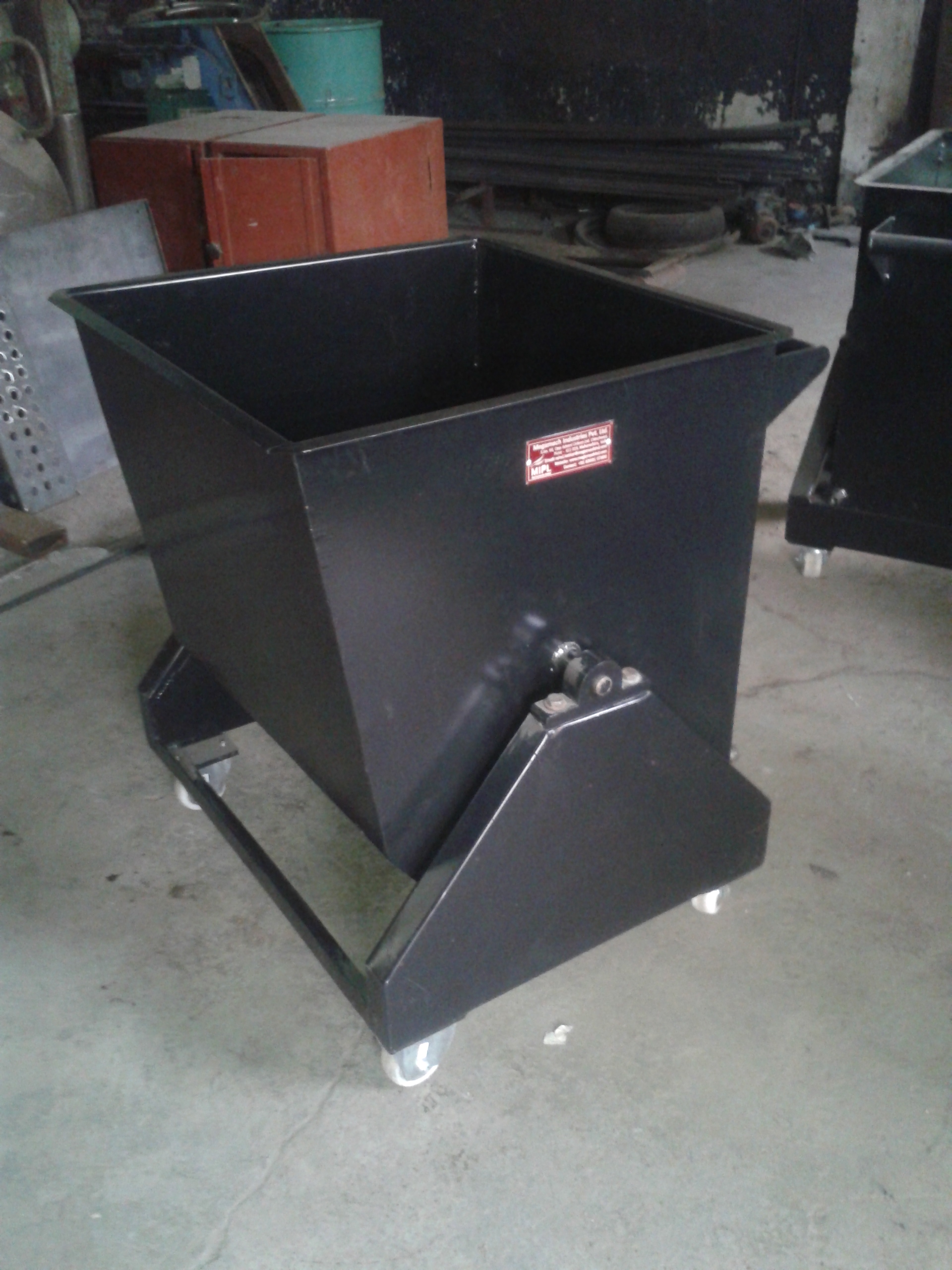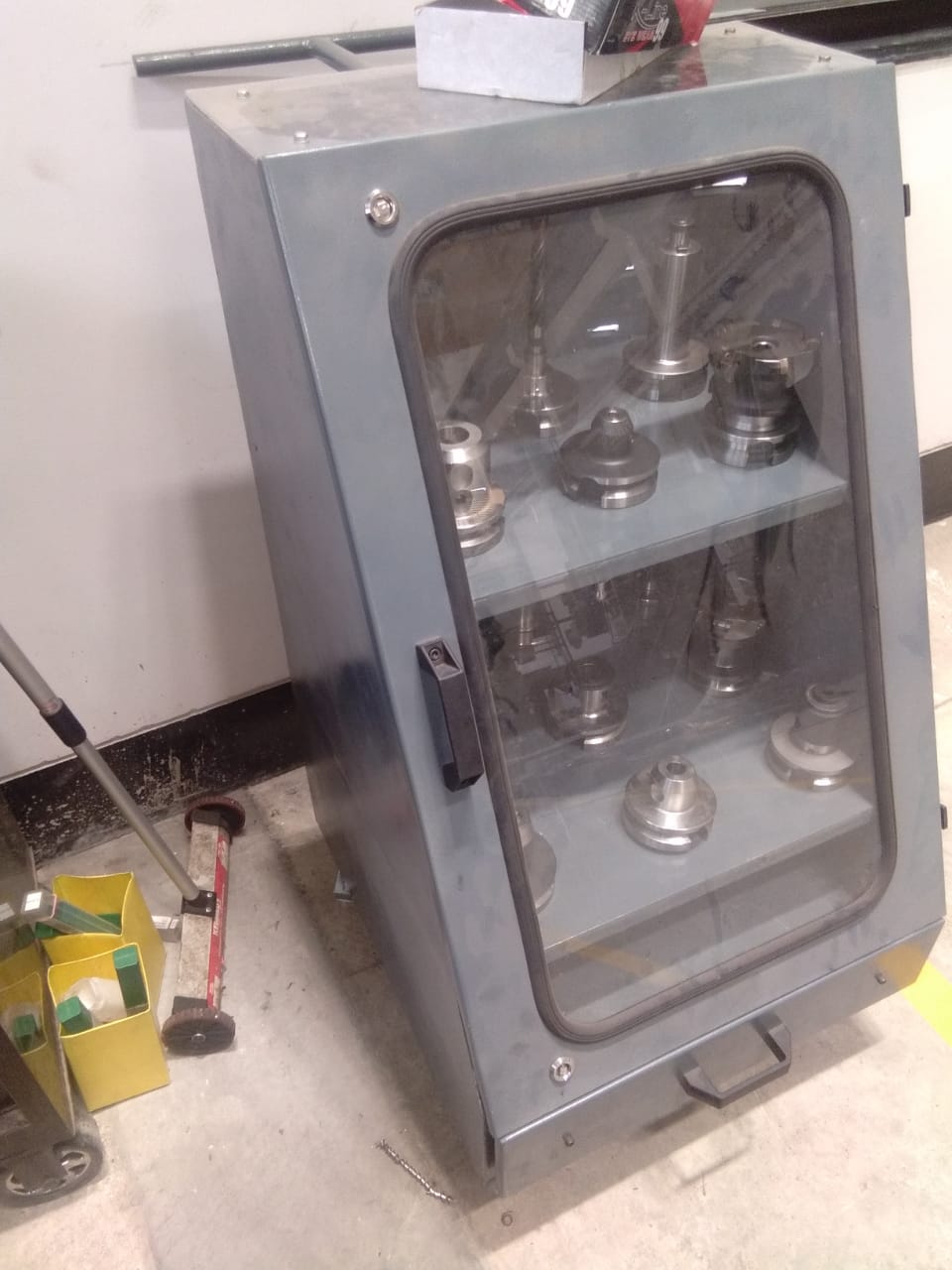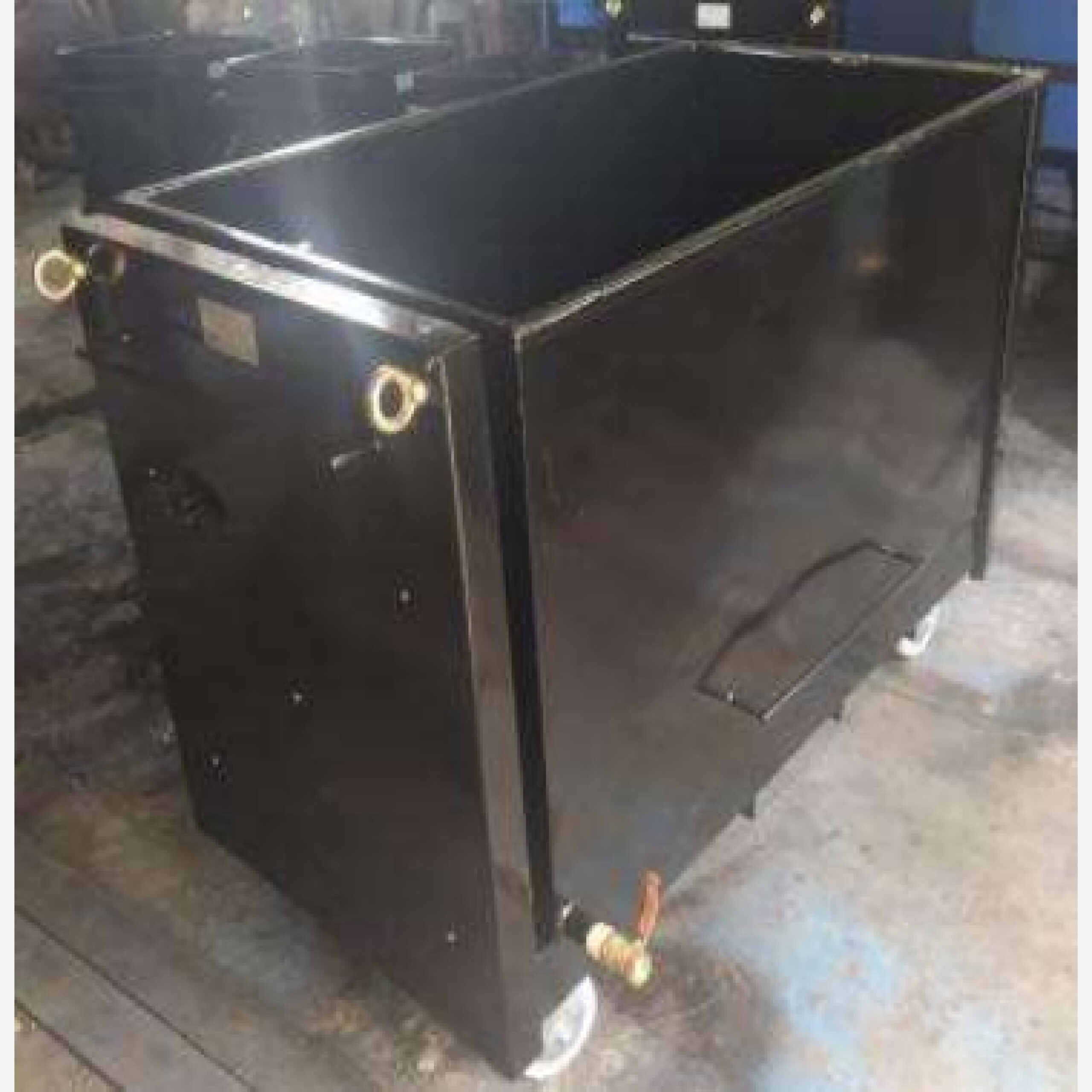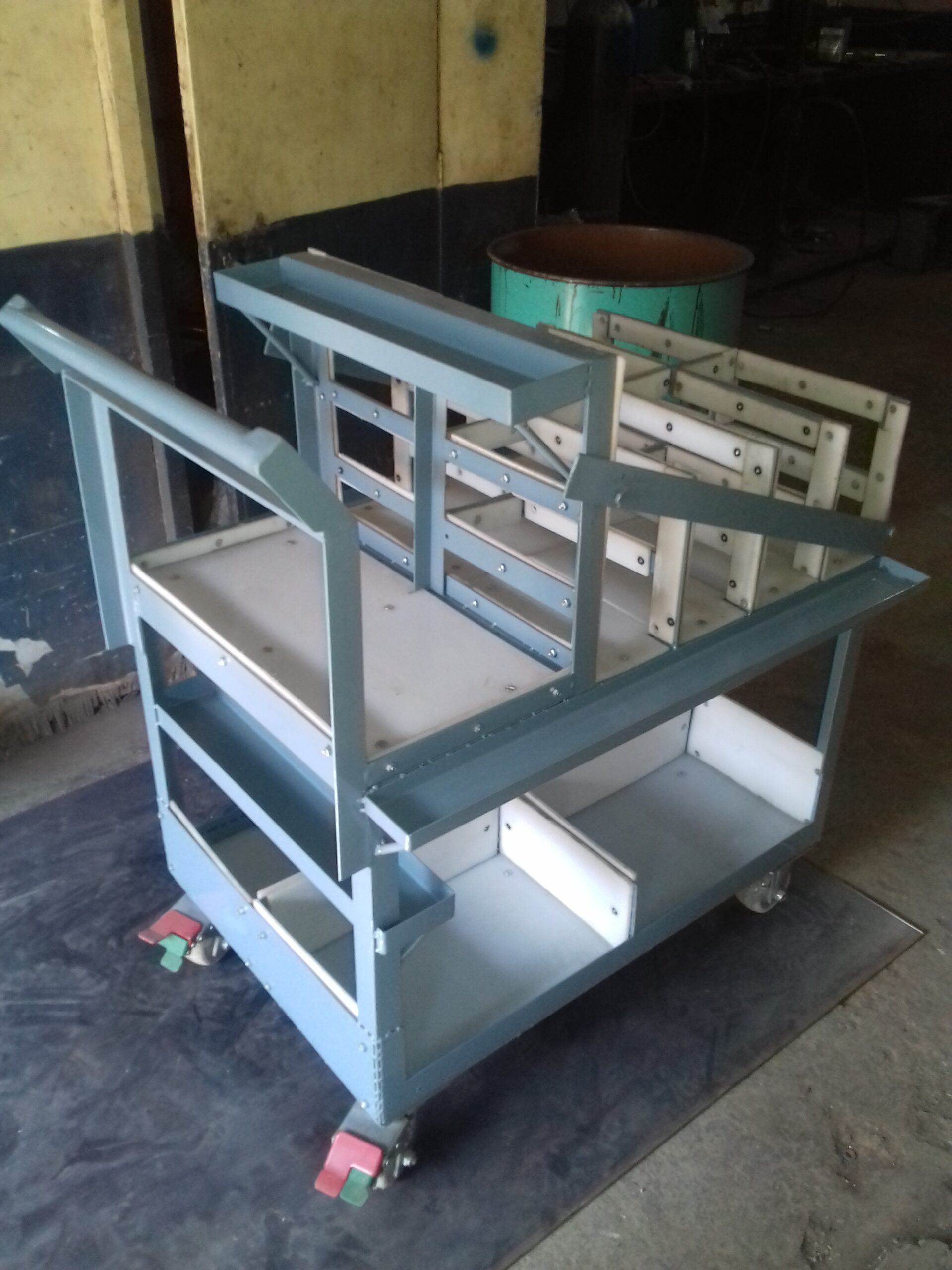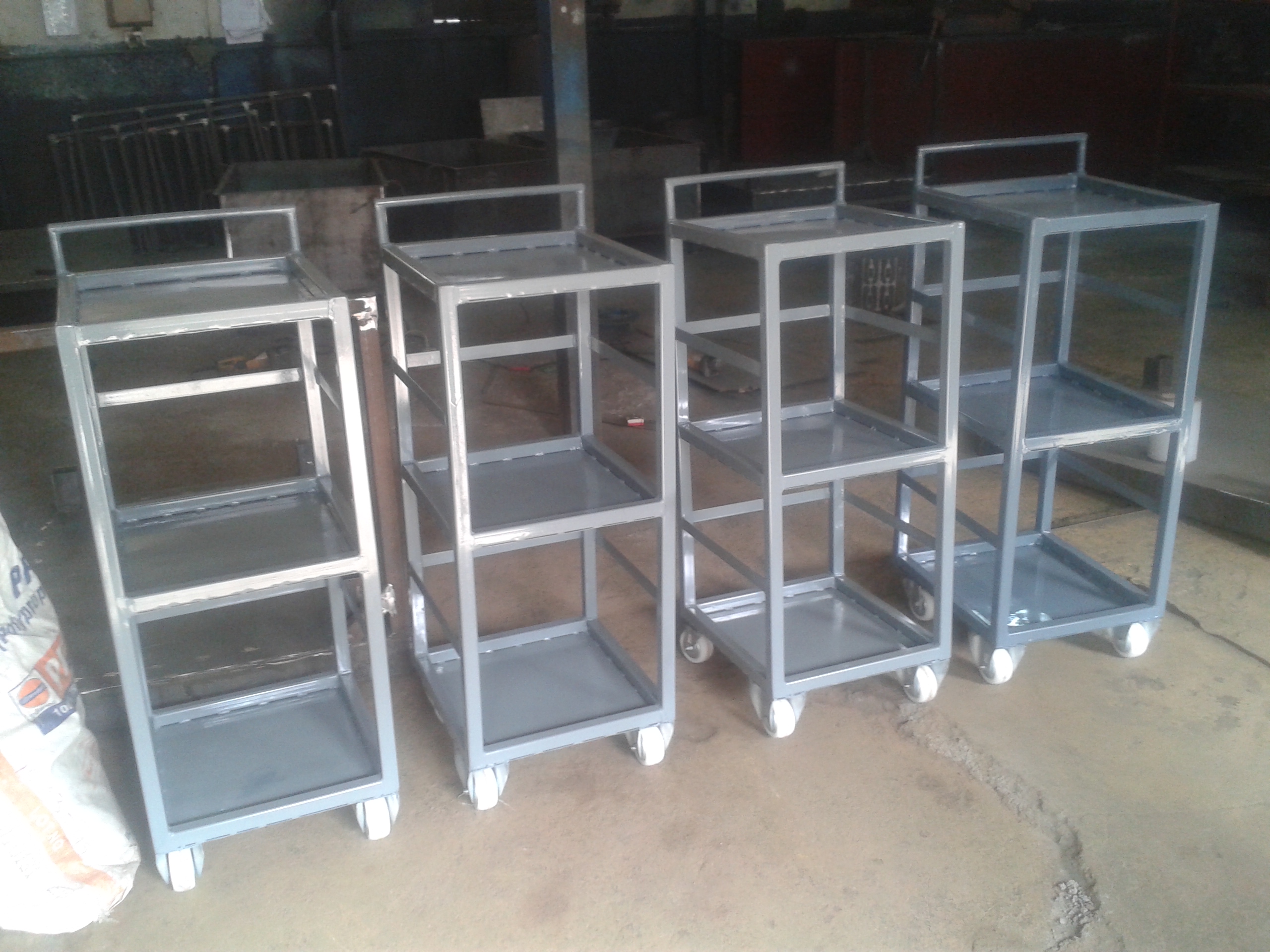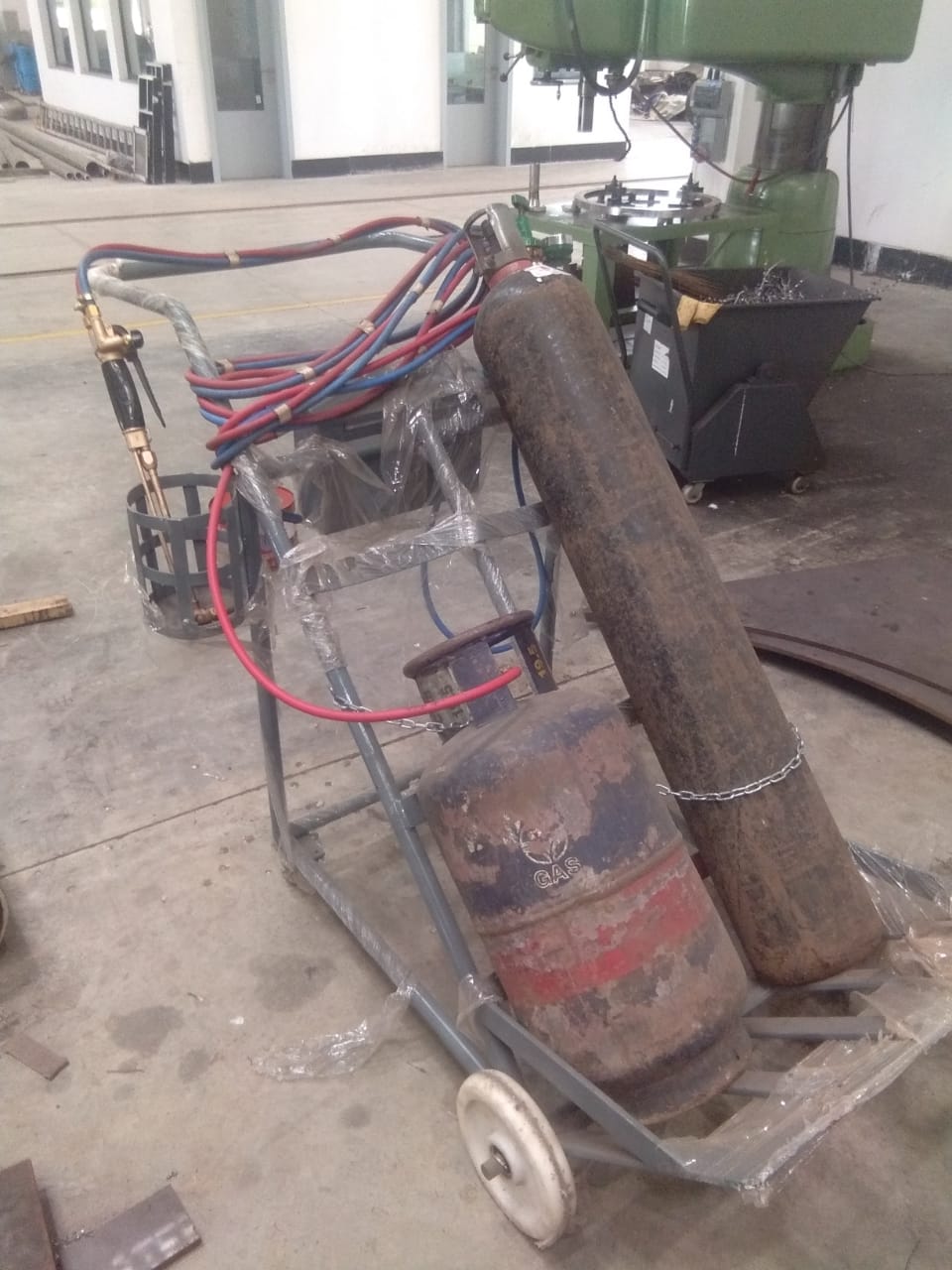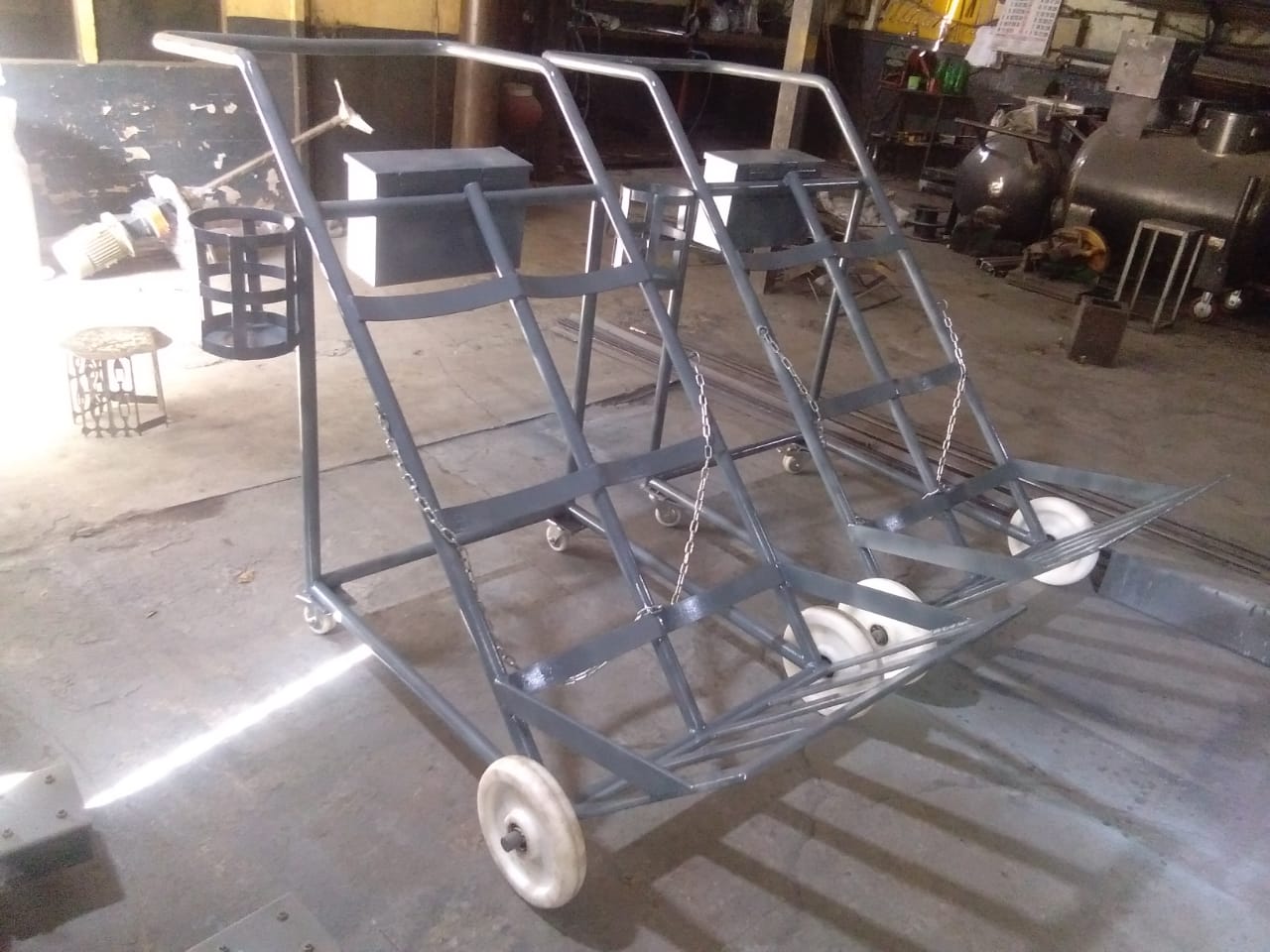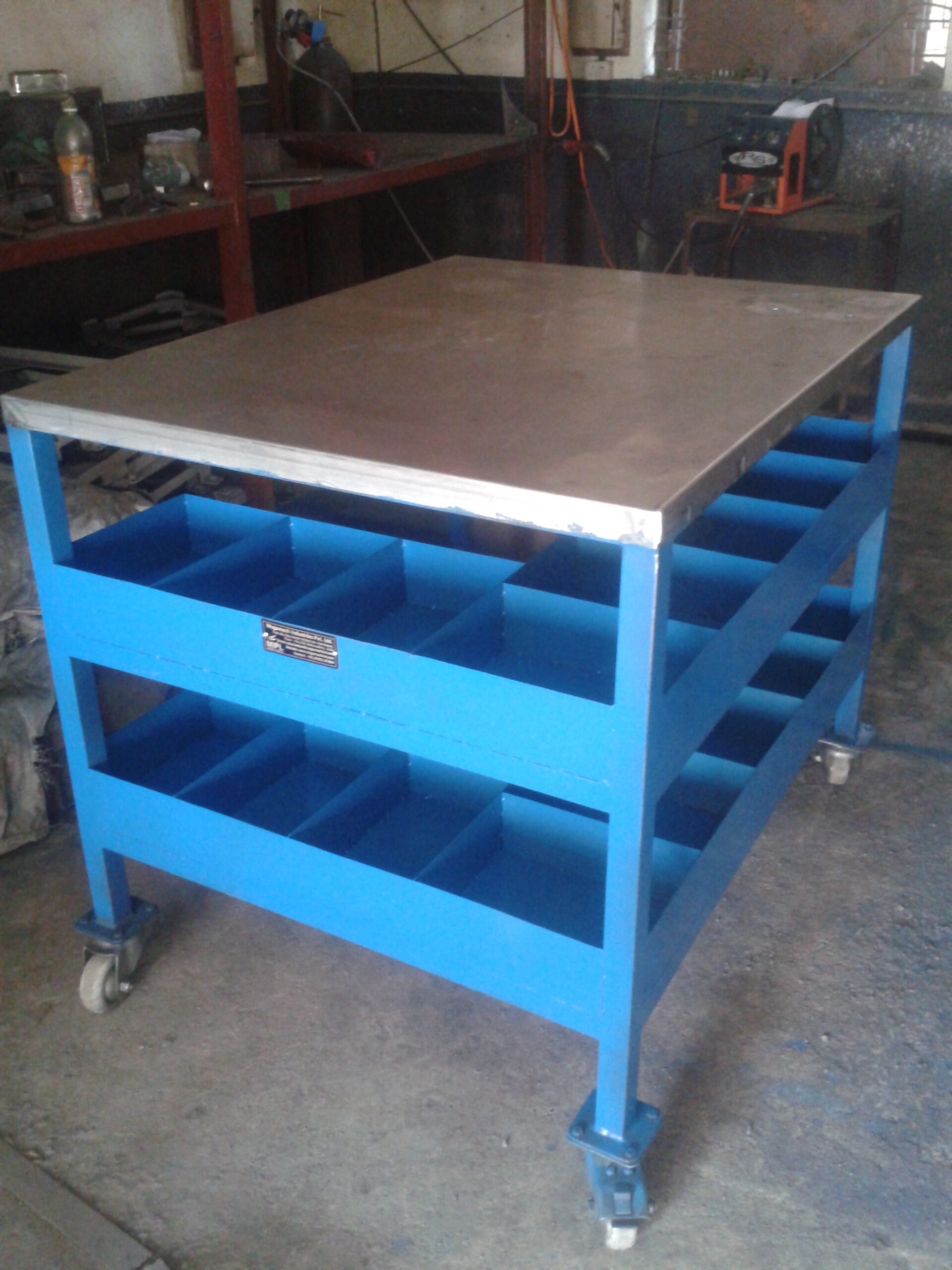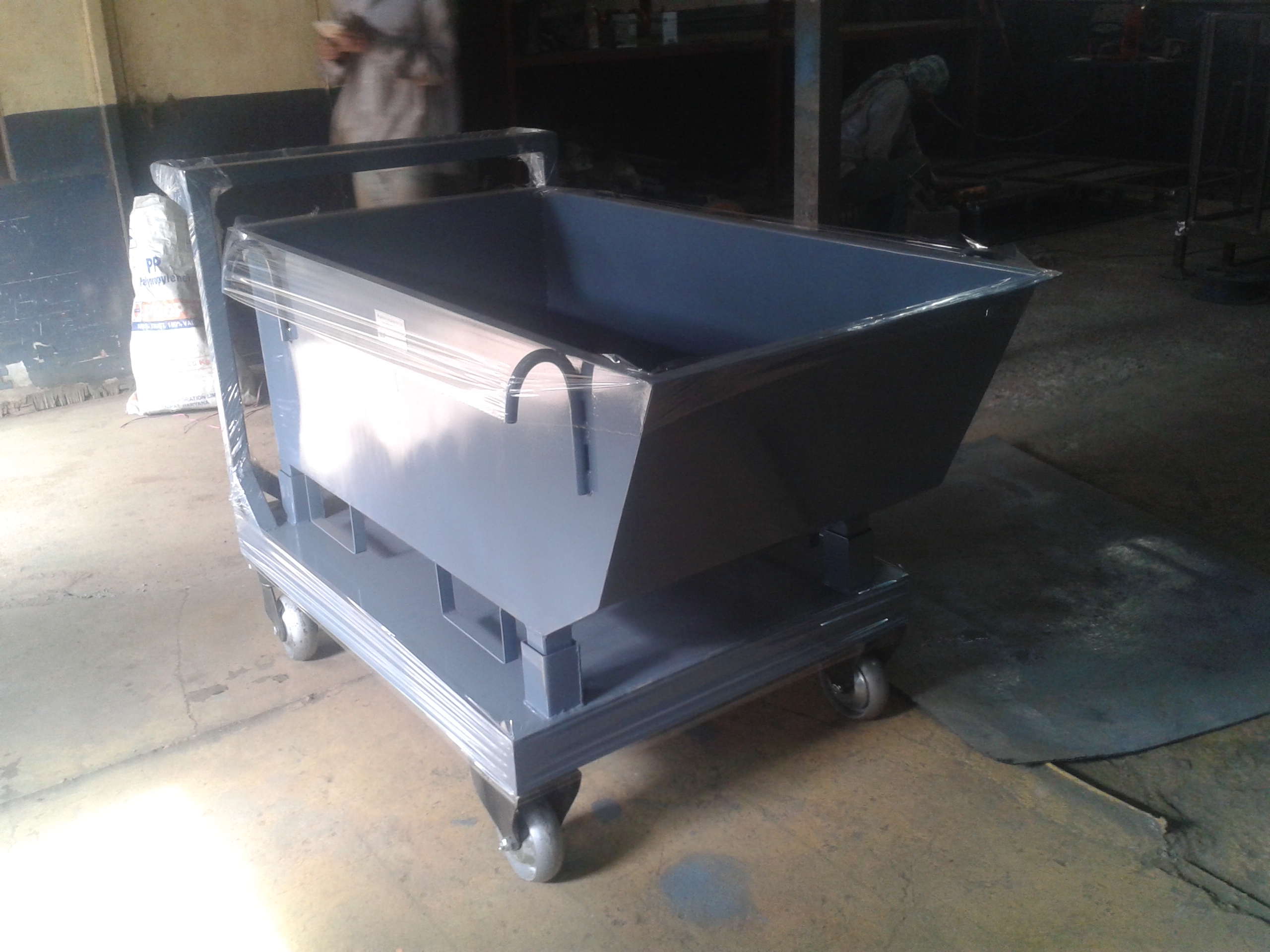Material Handling Trolleys
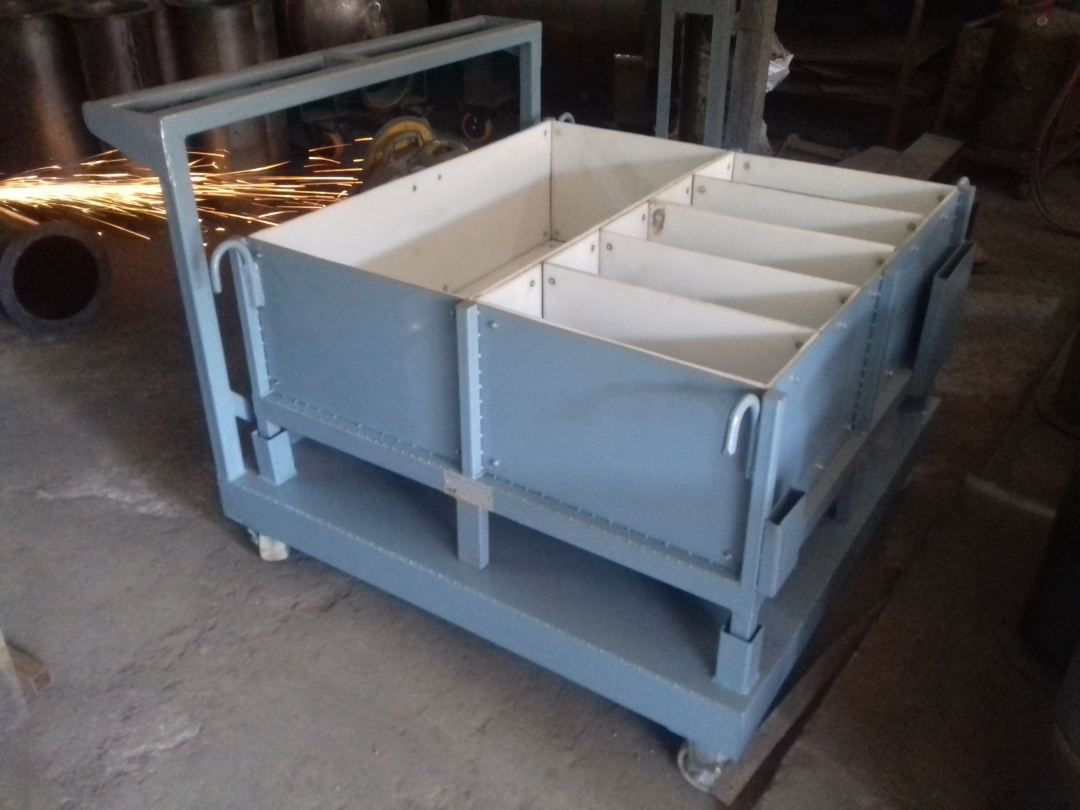
- The design of material handling trolleys should be sturdy and durable to withstand the weight and wear and tear of the materials being transported.
- Material handling trolleys should be versatile and adaptable to various industries and applications.
- Mobility is key for efficient material handling.
- Ergonomics are crucial for the comfort and safety of the operators. Ensure that the trolleys are designed with user-friendly features such as adjustable handles, brakes, and safety locks to prevent accidents and strain injuries.

Advantages Of Using Material Handling Trolleys
Efficiency
Increases efficiency in material transport, reducing the time and effort required for manual handling.
Safety
Reduces the risk of manual handling injuries and accidents by providing a stable and controlled means of moving heavy or bulky materials.
Productivity
Enhances productivity by allowing workers to move larger quantities of materials in a single trip, reducing downtime.
Versatility
Suitable for a wide range of industries and applications, from manufacturing and warehousing to retail and healthcare.
Customization
Can be customized with various attachments, shelves, and accessories to accommodate different types of loads and materials.
Common Applications For Material Handling Trolleys
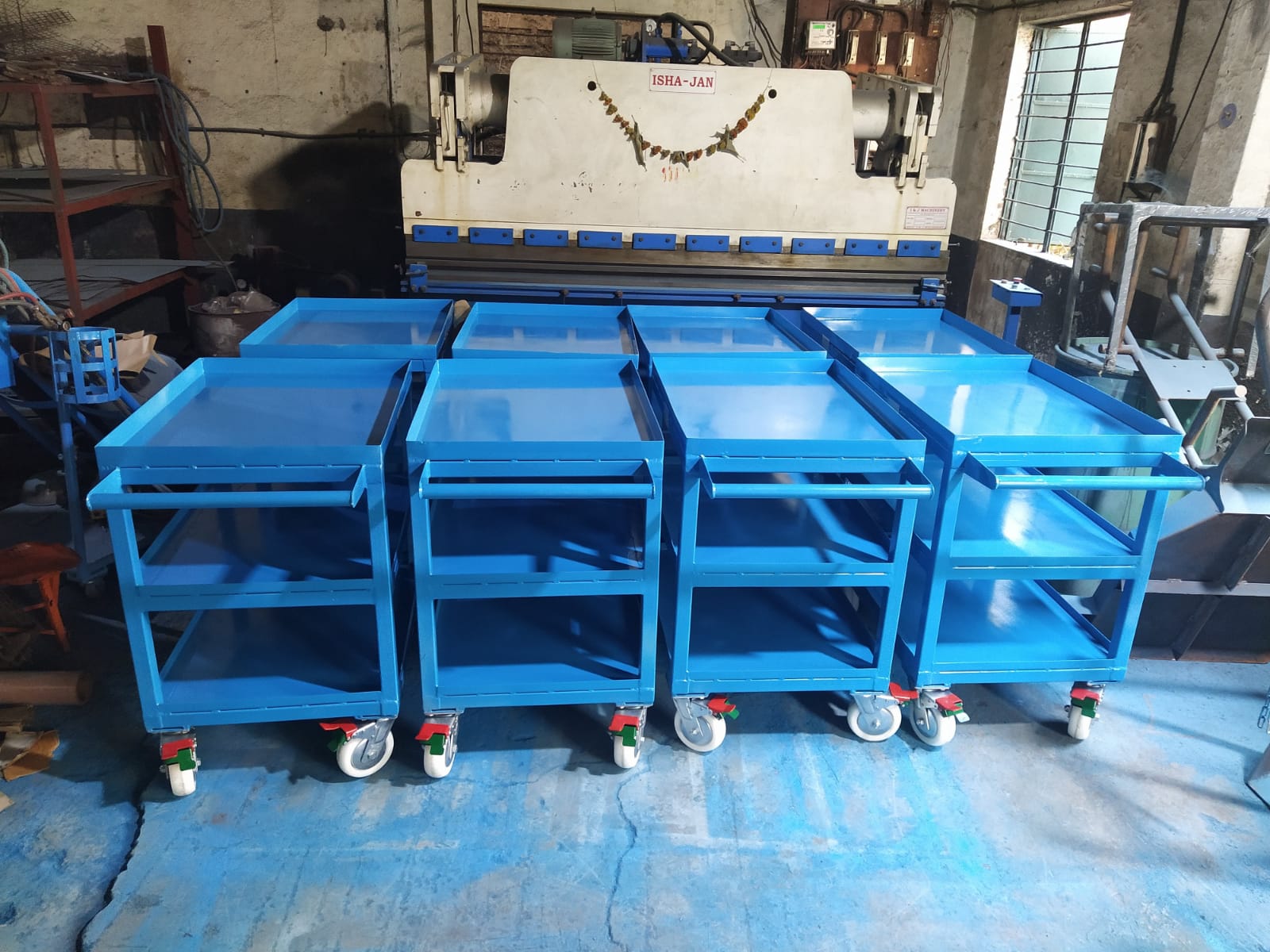
Common Applications For Material Handling Trolleys
Warehousing and Distribution Centers
- Transporting goods within warehouses.
- Loading and unloading trucks and containers.
Manufacturing Facilities
- Moving raw materials and components to production lines.
- Transferring finished products for packaging and shipping.
Retail Stores
- Stocking shelves and replenishing merchandise.
- Handling backroom inventory and restocking.
Construction Sites
- Moving construction materials and tools on job sites.
- Transporting heavy equipment and machinery.

